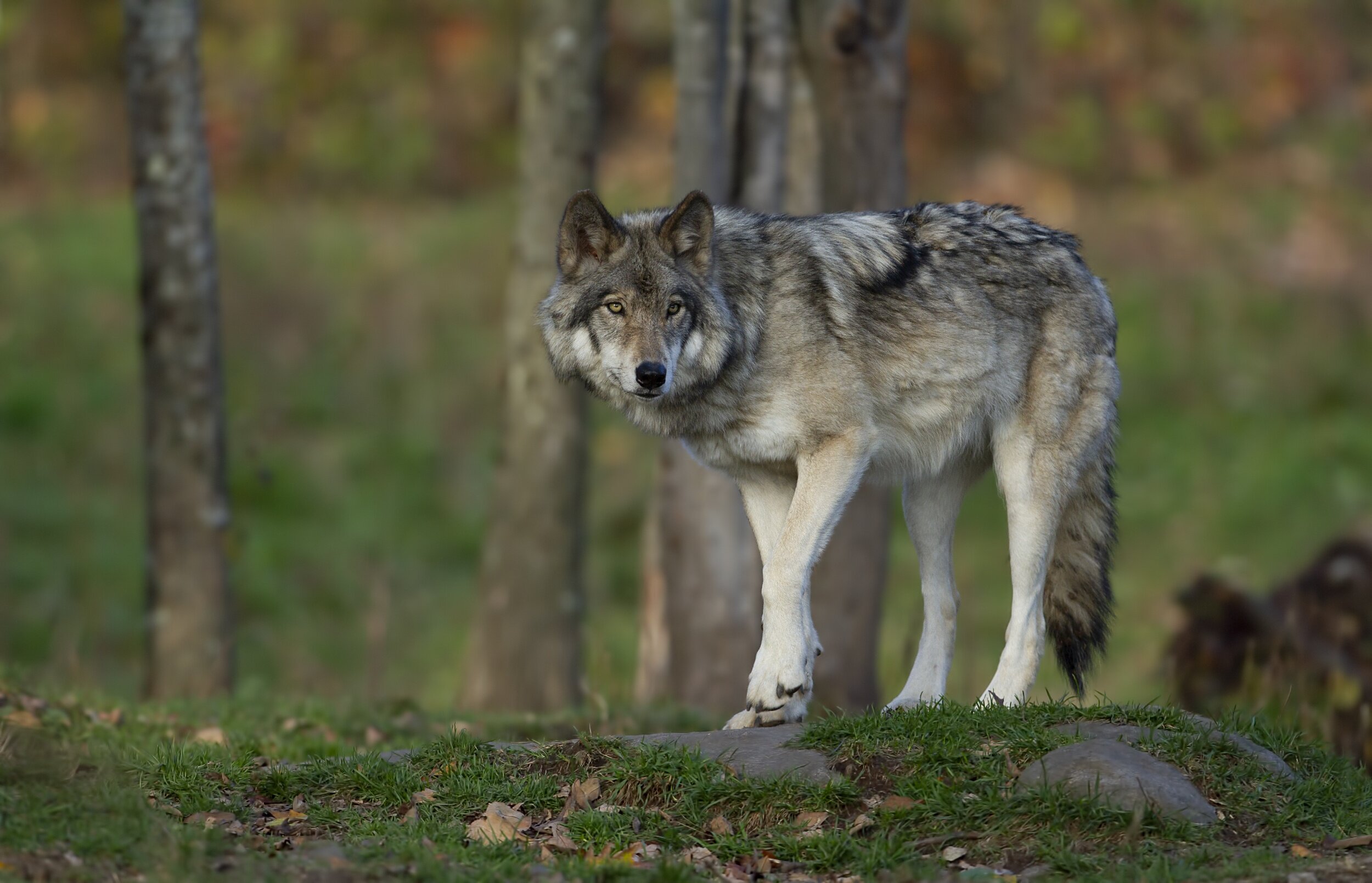For years, wolves have been on the endangered species list in the lower 48 states, but in October of 2020, wolves were removed from the Endangered Species Act.
The wolf population is scattered throughout the 48 contiguous states. The highest number at 2,655 in Minnesota and the lowest, at 15 wolves in Isle Royale. The wolf population in Yellowstone National Park, Wyoming, now supports over 1,700 wolves after the government-sponsored reintroduction in 1995 and 1996. They are now in Washington, Oregon, and, a smaller population in California. In 1998, Mexican gray wolves were reintroduced into New Mexico and Arizona. Their wild population has been slowly increasing with around 130 Mexican gray wolves in those areas.
In New Mexico and Arizona, at the end of 2019, only 163 Mexican gray wolves were counted in the wild. That is a 24% increase but they are losing their genetic diversity, which is crucial to the population because it helps future wolves adapt to diseases, stress, and environmental conditions.
The majority of the gray wolf’s former habitat in the contiguous 48 states are unsuitable for them now, and most likely, never will be, due to loss of habitat from building. Within those 48 states, the gray wolf only occupies about 10% of their former range. Looking at the long-term trend in land usage, much of the current or potential range for wolves will be developed and, therefore, becoming unsuitable for them. This is also an issue in Minnesota, where they have a larger population. The population numbers increased only after they were given protection with the Endangered Species Act, so the fear is a decrease in their population.
It has been said by many people that study wolves and their populations, that there are non-lethal methods, like electric fencing livestock, and guard dogs, to prevent wolves from eating the farmer's livestock. Adrian Treves, a professor of environmental studies at the University of Wisconsin-Madison, says that farmers need the support of the state to install those non-lethal defenses. Treves stated that since wolves live in packs when a member of that pack is killed, the pack/family will sometimes break apart. His lab found that the risk of livestock damage tripled the following months after the pack member was killed. He also added that the wolves don’t negatively impact deer populations. There are over 1 million deer in the state of Wisconsin, and hunters kill approximately 400,000 annually, another 50,000 killed by vehicles, leaving wolves only eating 25,000 deer.
Wolves are imperative in balancing ecosystems and driving evolution. They need connected populations to sustain their genetics, and the ecosystems need wolves to maintain a healthy balance of species. It’s been proven that after returning wolves to ecosystems, it benefited many species like songbirds, and beavers, who use the stream-side vegetation, that thrives when there are fewer browsing elk that would move more often to avoid wolves. Pronghorn and fox populations also benefit from wolves, because they control the coyote population.
Wolves are intelligent, highly social, majestic, and once roamed freely throughout North America until over-hunting, nearly made them extinct. Now they may face a possible population decrease again.
Written by Vala Titterington



